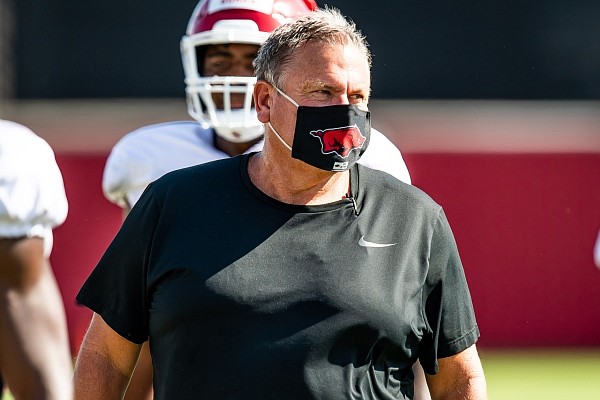College football teams will be required to hold at least seven padless practices during the preseason and the number of contact practices will be reduced from 21 to 18 under changes proposed by the NCAA’s oversight committee Thursday.
The football oversight committee's proposal goes to the Division I Council for approval this month. It is expected to pass and go into effect next season.
The changes to preseason practice come after a five-year study of six major college football teams showed players suffered more concussions during preseason practices than during games.
Coaches pushed for a few more contact practices and the final model approved by the committee settled on seven no-contact days over the course of 25 preseason practices.
West Virginia athletic director Shane Lyons, the chairman of the committee, said the plan is to hand over a final recommendation for a new preseason model for the Division I Council to consider at its May 19 meeting.
Lyons refers to the model as 9-8-8: eight days of players practicing in helmets and shoulder pads with no live tackling to the ground, nine days in just helmets and no more than eight full-contact days. The current proposal would also limit full-contact practices to no more than two consecutive days.
“We're trying to provide as much flexibility within the model as possible and not dictate what days they get to do what, and give each coach the ability to coach how they want to,” Lyons said. “But then also limit the number of contacts that we currently have from a direct hit, head-to-head contacts that you currently have in practices.”
During live-tackling practices, no more than 90 minutes of full contact will be permitted under the initial proposal.
“What I'm hearing, a lot of coaches aren't using 90 minutes so we may look and say, ‘Is that 75 minutes?’” Lyons said.
The study found that 48.5% of the concussions recorded occurred during August training camp. The teams involved in the study were Virginia Tech, North Carolina, Wisconsin, UCLA, Air Force and Army.
Todd Berry, executive director of the American Football Coaches' Association, said there was some concern among coaches that Army and Air Force would skew the study data. The two academies play a run-heavy, triple-option offense that can lend itself to more contact, he said.
Overall, though, Berry said the study is helping guide changes many coaches were already moving toward.
“We wanted things based on data rather than assumptions,” Berry said.
NCAA rules currently mandate at least two of 25 preseason practices be contactless and conducted without pads, Berry said, but a survey found most coaches already run about six of those leading up to the season.
He said going to nine padless practices, essentially walk-throughs, seems like a drastic change to coaches.
“To us that's kind of a giant leap," Berry said. "We'd rather take a step and then measure the results and say, ‘OK, we ended up in a good place.’ And take another step and keep improving along those lines.”
Coaches have been moving away from high-impact drills such as Bull in the Ring and the Oklahoma drill, where players mostly just run into each other.
The proposal bans straight-line contact drills, such as the Oklahoma Drill, and reduces the number of preseason scrimmages from three to two.
“Most of our coaches aren’t doing it so I don’t know if it’s going to move the needle much,” Berry said. “But I get it.”
Berry said scaling back too much on hitting in practice could lead to players not being properly prepared to protect themselves in games.
“We’re fearful if we go too far in one direction we'd have a lot of injuries in that first game,” Berry said. “There is a process, a teaching progression to get players to learn how to control their bodies.”

